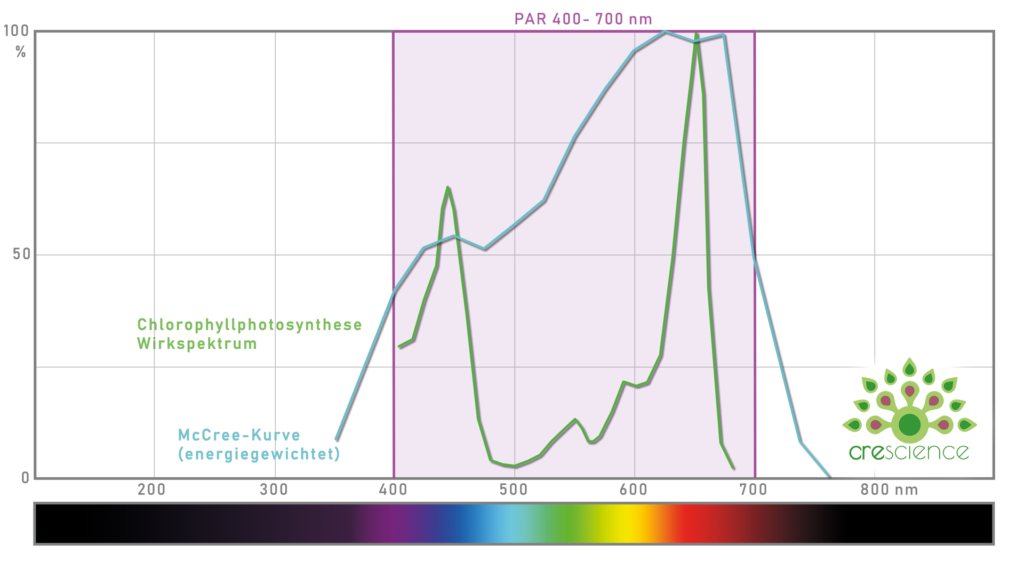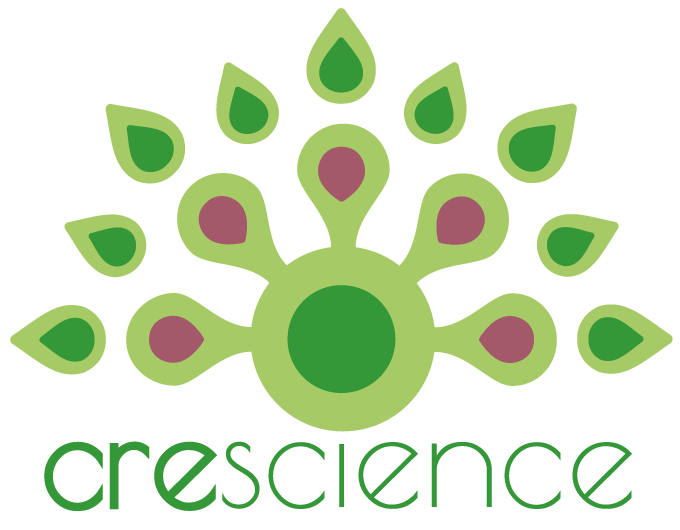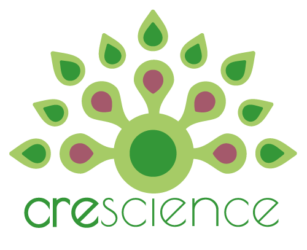Grow Lights in Numbers
You Should Be Familiar with These Metrics for Grow Lights
This page gives an overview of the most important units of measurement related to light for plants. When doing research on plant lamps you will be confronted with countless metrics and abbreviations - Watt, PAR, PPFD, PPF etc. are just some of the numbers that can be used to Comparison of lighting systems for horticulture can be cited. Why one Lumen not as a comparative value for plant lamps, we've already discussed on the blog.
Understandably, customers and prospects find it difficult to compare different products and put them into the right context. Therefore, this list should show which metrics are relevant for plant lighting and for what.
Important measurements for plant lighting
- PAR
Photosynthetically active radiation - equal weighting of all wavelengths between 400 and 700 nm - DLI
Daylight integral (of photosynthetically active radiation) - PPF
Photosynthetic photon flux - all PAR photons leaving a light source - PPE (PPF/J)
Efficiency - Photosynthetic photon flux per Watt of electrical energy - PPFD
Photosynthetic photon flux density on one surface - YPF
Weighted photon flux in the range 340-760 nm according to the effective spectrum (McCree) of photosynthesis
What light plants need: Photosynthetically active radiation (PAR)
It is well known that the main part of photosynthesis is stimulated by light that lies in the spectral range between 400 and 700 nm, pretty much the visible part of the light spectrum. This is exactly what photosynthetically active radiation says: All photons that fall within this range are counted the same. Light outside this range is meaningless for the PAR metric.
In contrast, the measuring unit lumen represents the sensitivity of the human eye. The graph clearly shows why lumen values are hardly suitable as a benchmark for plant lighting.

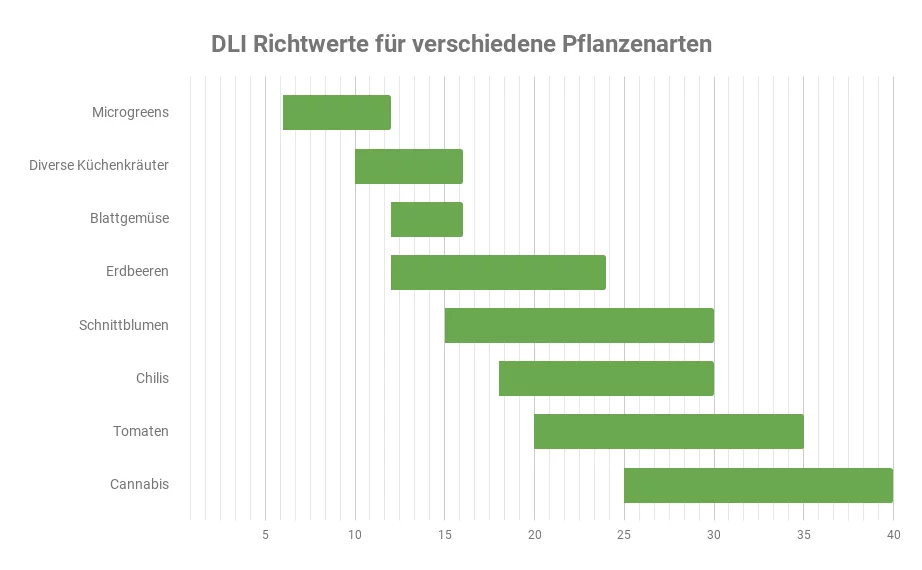
How much light plants need: Daylight integral - DLI
The required intensity is derived from the total light requirement of the plant during the day. An index for the different light requirements is the daylight integral, called DLI (Daily Light Integral). It describes how many photons hit a certain area in 24 hours.
For various plant species, it is known how much light they need or can sensibly use in the course of a day.
Calculation of the DLI
PPFD in µmol/m²s [number of photons per second per m²]. * 3600 [Number of seconds in an hour] * t(h) [Number of light hours in a day] / 1.000.000 = DLI in mol per day
How much light plant lamps emit - PPF
This information should not be missing for plant lamps: How many photons in the range of photosynthetically active radiation are emitted? This is the photosynthetic photon flux (PPF). This is the most important metric for comparing different light sources because it is determined in a standardized test setup (integrating sphere). This allows an objective assessment of how good the lamp is at generating light in the PAR space between 400 and 700 nm.
How efficient plant lamps are - PPF/W
With reference to the photon flux, it is possible to objectively assess how efficient and thus economical a lighting system for plants is. For this purpose, the PPF is divided by the electrical power expended. PPF/W is given in the unit µmol/J.
Overview of different lighting technologies
Fluorescent lamps: approx. 0.7 µmol/J
Current NDL 600W: approx. 1.8 µmol/J
Current NDL 1000W DE: approx. 2.1 µmol/J
Current LED: over 3 µmol/J
What really gets through to the plants - PPFD
These theoretical values are very good for finding out what a light source emits in photons and how efficiently it works. What, in turn, reaches the plants cannot be determined with theoretical values, but depends on the individual usage scenario.
The so-called photosynthetic photon flux density (PPFD) indicates how many photons of the PAR region impinge on a square meter. This should be based on the requirements of the plants (see DLI) and the aim should be to achieve a distribution that is as uniform as possible.
Problems with PPFD as reference value
Actually, PPFD is more relevant in practice than the pure output, i.e. PPF. In fact, it is easy to measure how much PAR reaches the plants. However, the PPFD can only be determined in relation to the concrete environment. Distance to the plants (or to the sensor), light guidance (any reflectors or optics), the reflection of the walls and the ground etc. play an enormous role. Even the temperature in the room has a certain influence on the measured values. Since these factors are not standardized, the measurement is unique in each test scenario. Unfortunately, cross-manufacturer comparability is therefore not guaranteed. In order to avoid misinterpretations, we go to our own PPFD tests as transparently as possible.
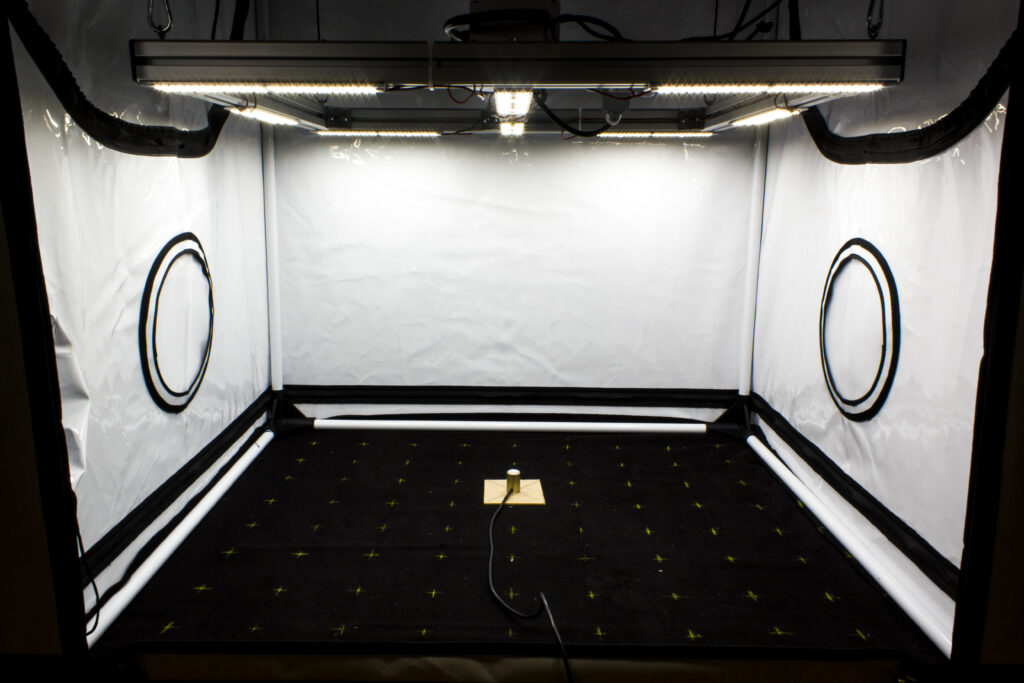
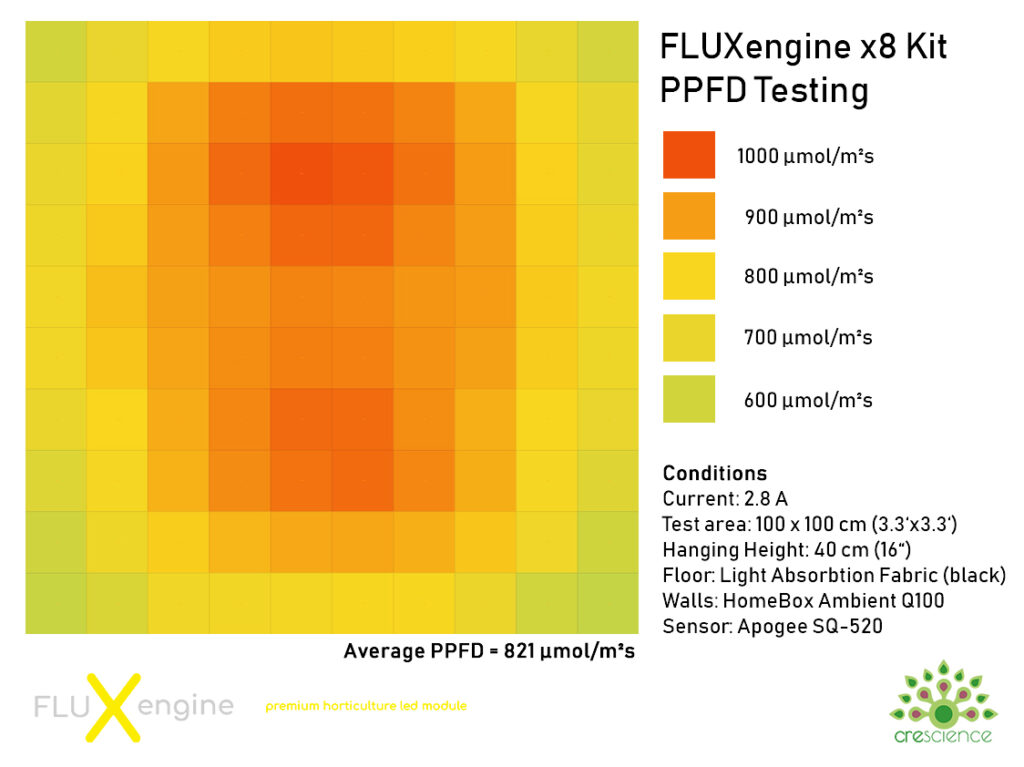
How plants use light - spectrum and YPF
Spectrum
As diverse as the flora and faua on our planet is, the needs of plants are also very different. As a result, the required quality of light varies between different genera and stages of development. However, the consensus is that healthy development of plants is only possible under a broadband spectrum that covers the PAR range. In the growth phase, an increased blue component (e.g. from 4000K under white light) is advantageous, in the flowering phase an increased red component (e.g. up to 3000K under white light). In addition, there are different wavelengths that influence photomorphogenesis (formation of the growth form) and production of secondary plant substances.
YPF
It is disputed which wavelengths contribute most effectively to photosynthesis. In 1973 McCree determined the effective spectrum of photosynthesis on the basis of 22 species. The measurand YPF (Yield Photon Flux) weights the light of different wavelengths on the basis of this effective spectrum, also called McCree curve. However, since the measurements have come under firethis metric should be used with caution. McCree had considered individual leaves in isolation, not the plant as a whole. In addition, the measurements were made at relatively low light intensities.
